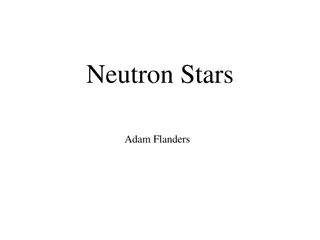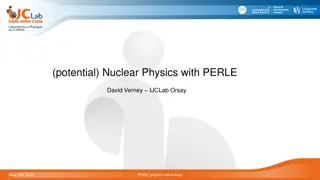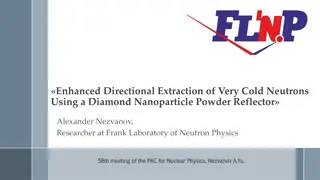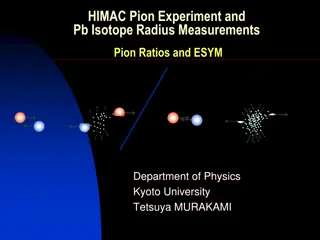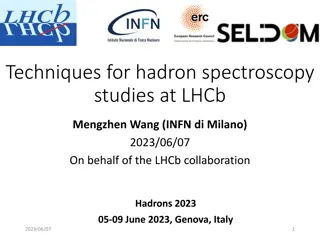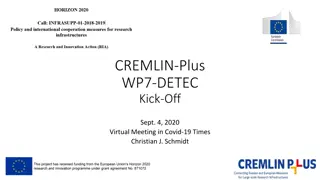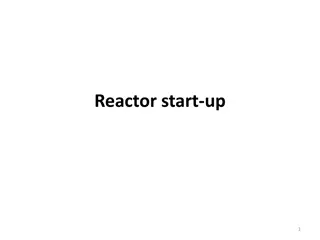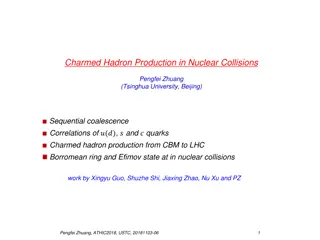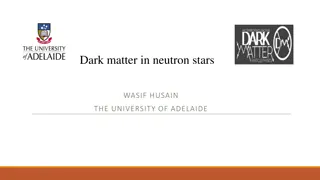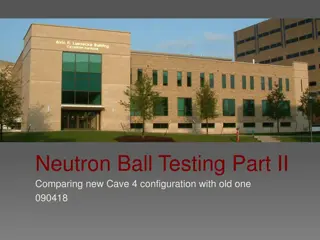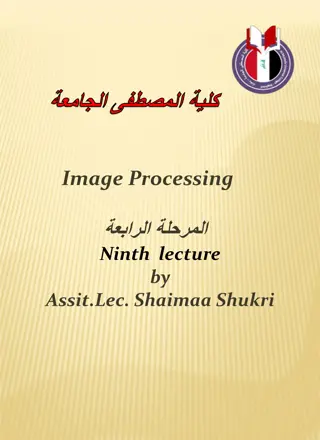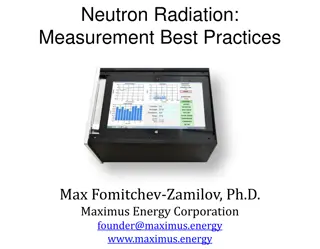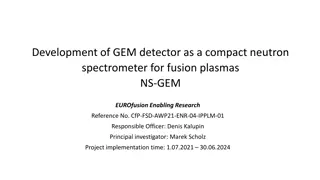Cutting-Edge Developments in Hadron Physics and Neutron Detection
Exploring advancements in hadron physics with projects like n-XYTER for homeland security, T2K After applications, and FAIR FEB developments. Additionally, discover the innovative Hydrogen TPC detector designed to identify neutrons for security purposes.
Download Presentation

Please find below an Image/Link to download the presentation.
The content on the website is provided AS IS for your information and personal use only. It may not be sold, licensed, or shared on other websites without obtaining consent from the author.If you encounter any issues during the download, it is possible that the publisher has removed the file from their server.
You are allowed to download the files provided on this website for personal or commercial use, subject to the condition that they are used lawfully. All files are the property of their respective owners.
The content on the website is provided AS IS for your information and personal use only. It may not be sold, licensed, or shared on other websites without obtaining consent from the author.
E N D
Presentation Transcript
FP7 Call 8 JointGEM continuation readout electronics n-XYTER ? T2K After ? active TPC large area prototype application homeland security ? medicine ?
AFTER Main Features Power Supply Reference Voltage Reference Current No zero suppress. No auto triggering. No selective readout. x72(76) AFTER 1 channel 120fC<Cf<600fC BUFFER FILTER SCA CSA ADC 511 cells 100ns<tpeak<2us Power On Reset SCA MANAGER W / R SLOW CONTROL Asic Spy Mode TEST CK In Test Mode CK CSA;CR;SCAin (N 1) Serial Interface Main features: Input Current Polarity: positive or negative 72 Analog Channels 4 Gains: 120fC, 240fC, 360fC & 600fC 16 Peaking Time values: (100ns to 2 s) 511 analog memory cells / Channel: Fwrite: 1MHz-50MHz; Fread: 20MHz Slow Control Power on reset Test mode: calibration or test [channel/channel] functional [72 channels in one step] Spy mode on channel 1: CSA, CR or filter out 3 CERN, 10 September 2007
FAIR FEB-Developments (n-XYTER based) chip board for evaluative needs. FEB starter kit (Rafal Lalik) one- 2chip FEB for gas detector readout PANDA GEM-TPC 4chip FEB for Silicon detector readout, double sided Flexcable as an alternative to PCBs: Studbonding of chips to micro cables FEB starter kit board realized: fully tested manufacturing problems with fan-in make resubmission necessary employed FEB and SysCore2 to clarify interfacing issues will use resubmission to fix a few minor bugs this Wednesday
Hydrogen TPC Neutron TPC A detector that can identify neutrons and measure the direction that the neutrons arrived from could be useful for homeland security purposes. The goal of the neutron TPC project (at LLNL) is to build such a detector from a hydrogen filled TPC.
Hydrogen TPC The detection principle is very simple. A fast neutron (~2MeV) from a fission source elastically scatters with the hydrogen in the TPC to produce a proton track in the gas. This proton is tracked and the direction of the proton is correlated with the direction of the incoming neutron. Although the kinematics of the scatter blurs the correlation, it only takes about 10 neutron scatters to reduce the cone of uncertainty to the neutron source down to about 16 degrees.
Read-out Electronic Architecture A Highly multiplexed architecture to reduce the power consumption taking benefit of the low event rate ~124.000 channels 1-6 Tbaud*/s peak Pre-amp and shapers Samplers and multiplexers *1 baud = 10 bit 1728 AFTERs 432 FEC ~2 ms retention max. 34 Gbaud/s peak On-detector electronics 400 Gbit/s peak Analog to digital conversion 432 ADCs Digital buffer 72 Mezzanine cards 72 Optical fibers 6 Concentrator Cards ~1-10 Gbit/s averaged Data concentration Standard LAN connection(s) ~0.1-1 Gbit/s Shared DAQ system Architecture principles AFTER ASIC : 72 channels; Signal amplified & stored in the SCA (511 cells) External trigger: digitization of the totality of the SCA of all the channels (2ms) ADC + digital buffer mounted close to the detector Multiple optical fibers send data to off-detector concentrators Interface to common DAQ via standard network 7 CERN, 10 September 2007


